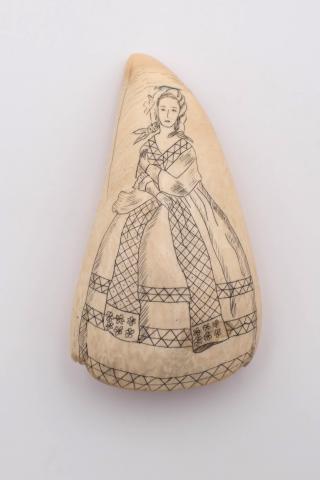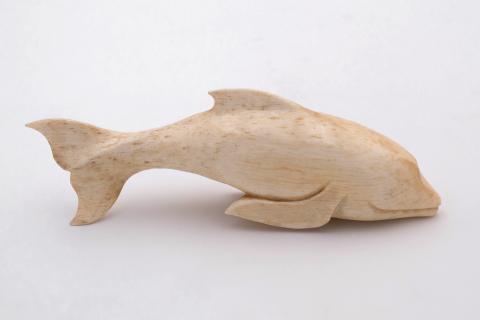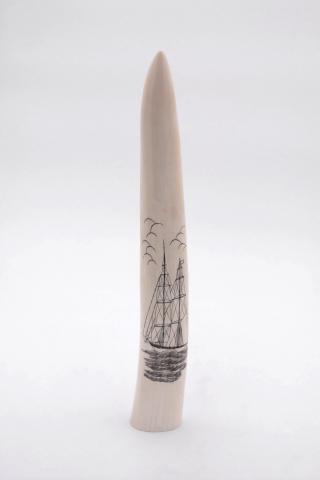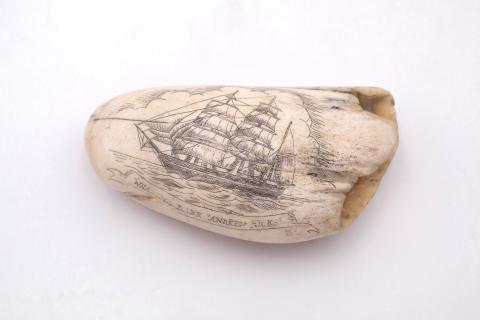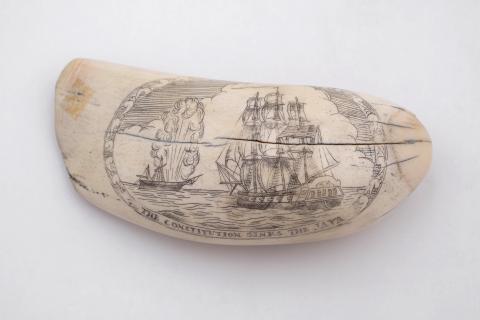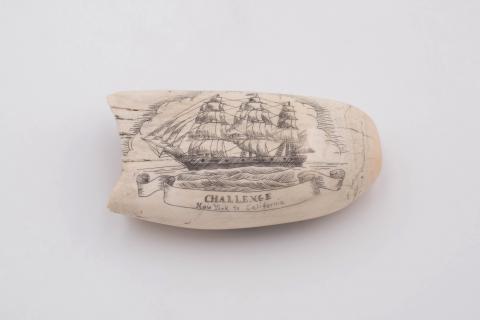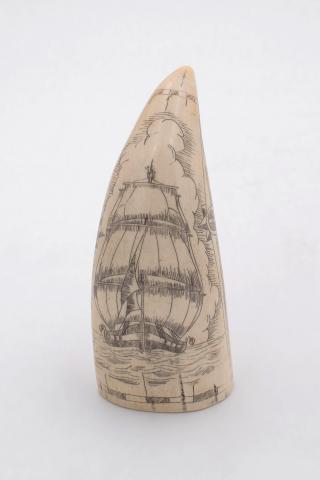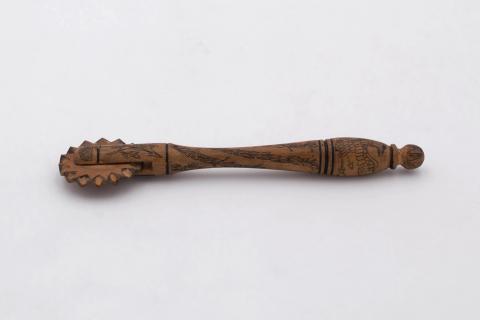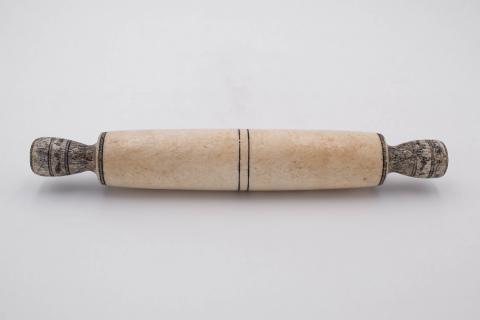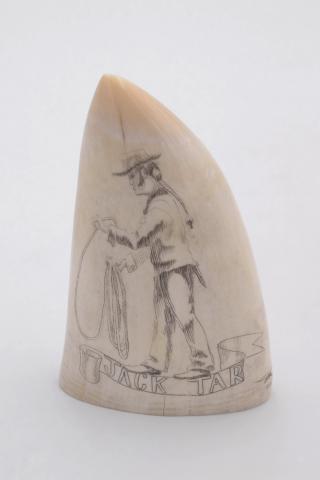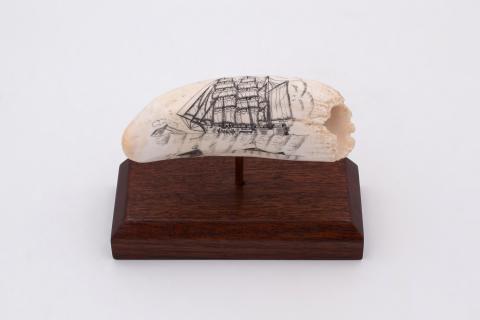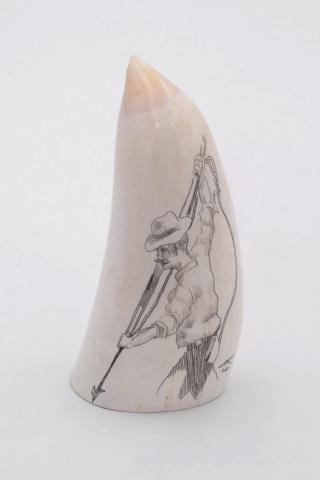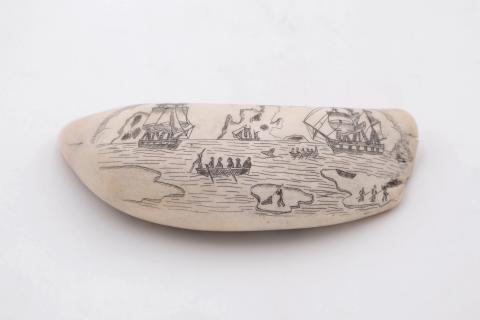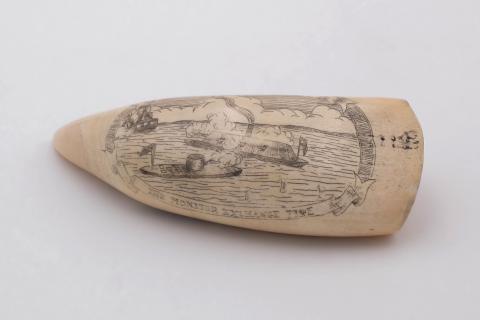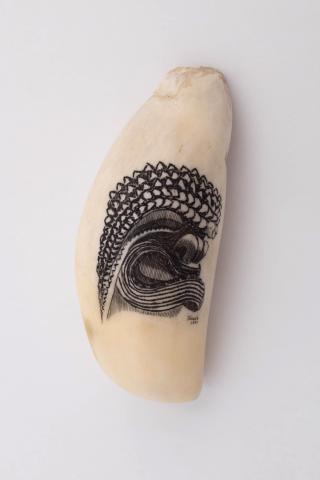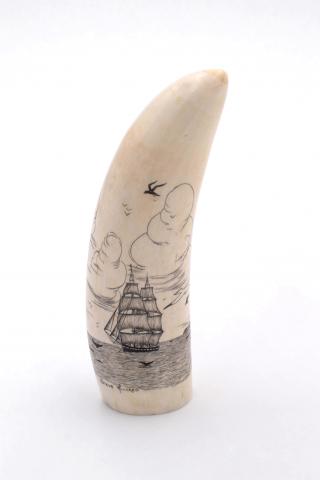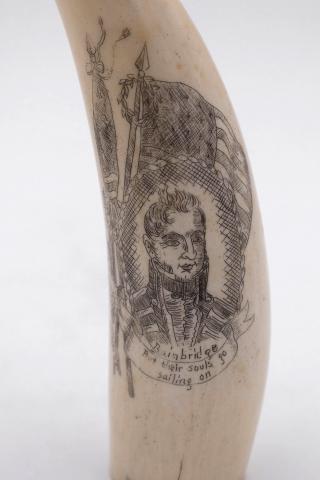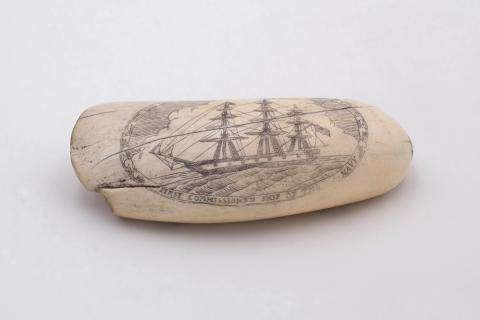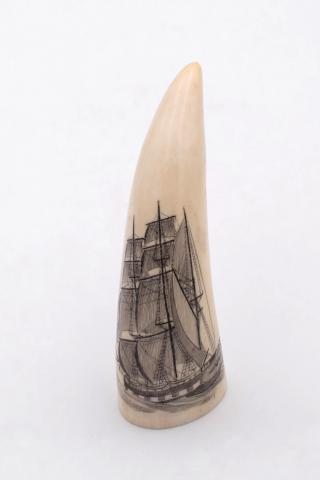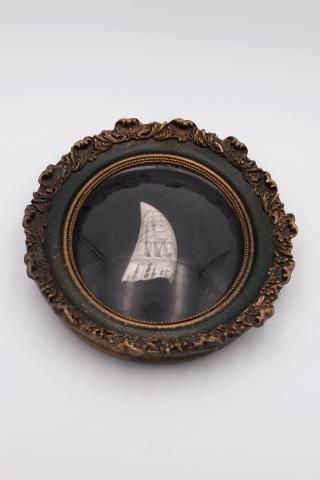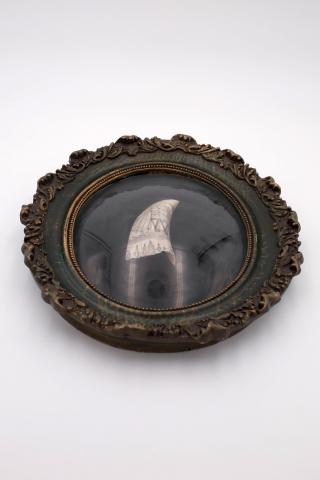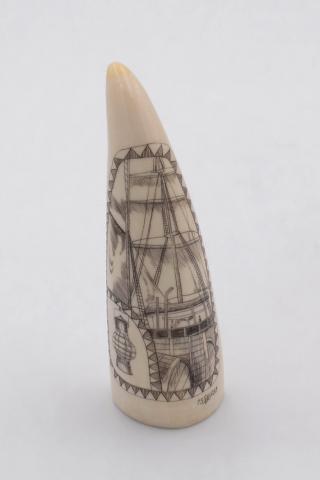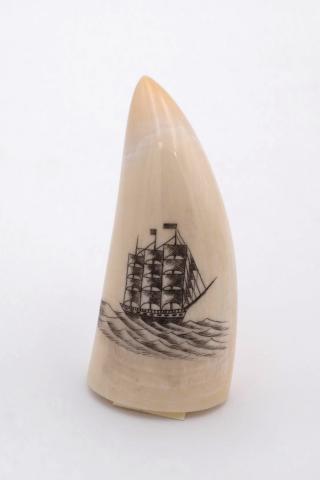Douglas and Beverly De Sure Scrimshaw Collection
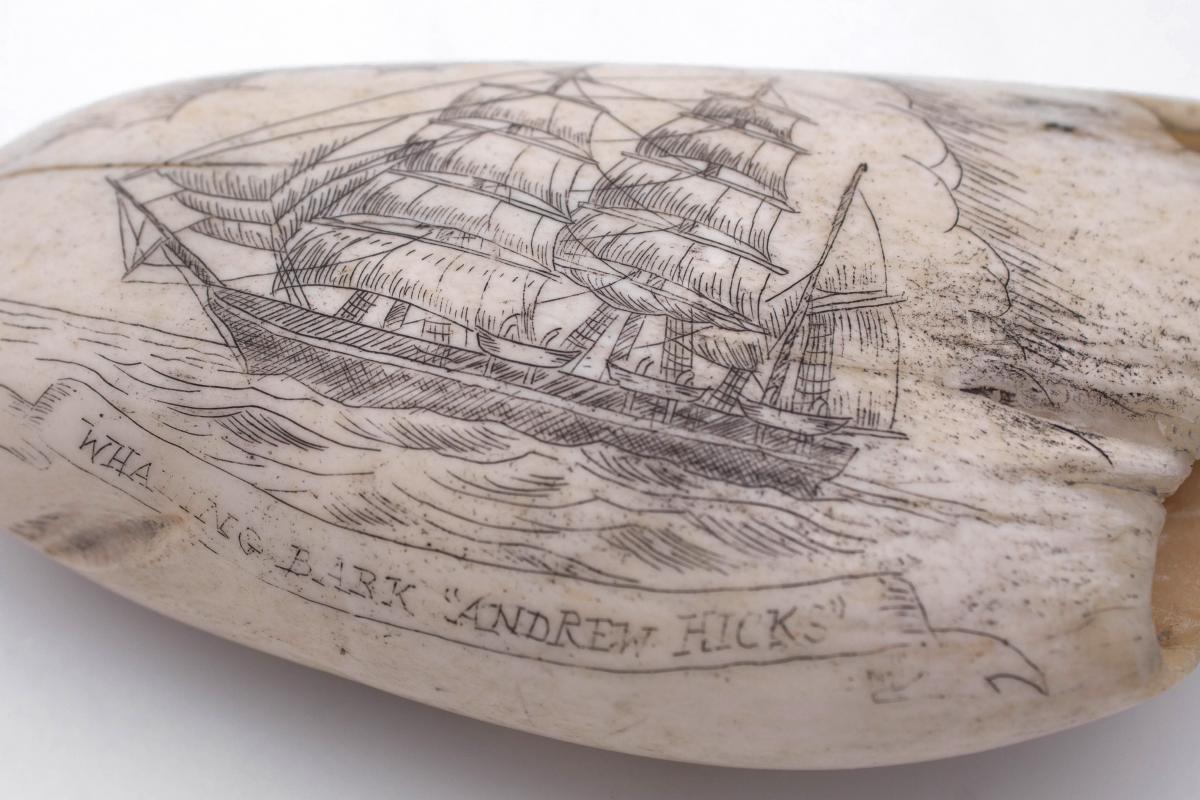
Douglas and Beverly De Sure Scrimshaw Collection
American whaling began in the waters of the Atlantic, and flourished from the late 1700’s through the mid-1800’s. The successful profits of whaling, and declining whale populations in the Altantic Ocean, drove whaling ships around the southern tip of South America into Pacific waters, whalers arriving in Hawaiʻi in 1819. For Hawaiian ports, especially Honolulu and Lahaina the whaling fleet was the crux of the economy for over 20 years. On what would normally amount to a 3 to 5 year journey, whalers spent time etching pictures onto whale teeth, bone, and other forms of ivory. These etchings into ivory, called SCRIMSHAW, were scratched line by line using knife points or sail needles into the scratches at varying intervals was rubbed soot from stoves or gun powder to create the black lines of the drawings. Scrimshaw captures scenes from life at sea, loved ones missed, tributes to God and country, homage to historical events, and both whaling successes and failures. Today, some 200 years later, scrimshaw from the whaling period stands a journal entries to the sacrifices and scenes of a career long forgotten.

